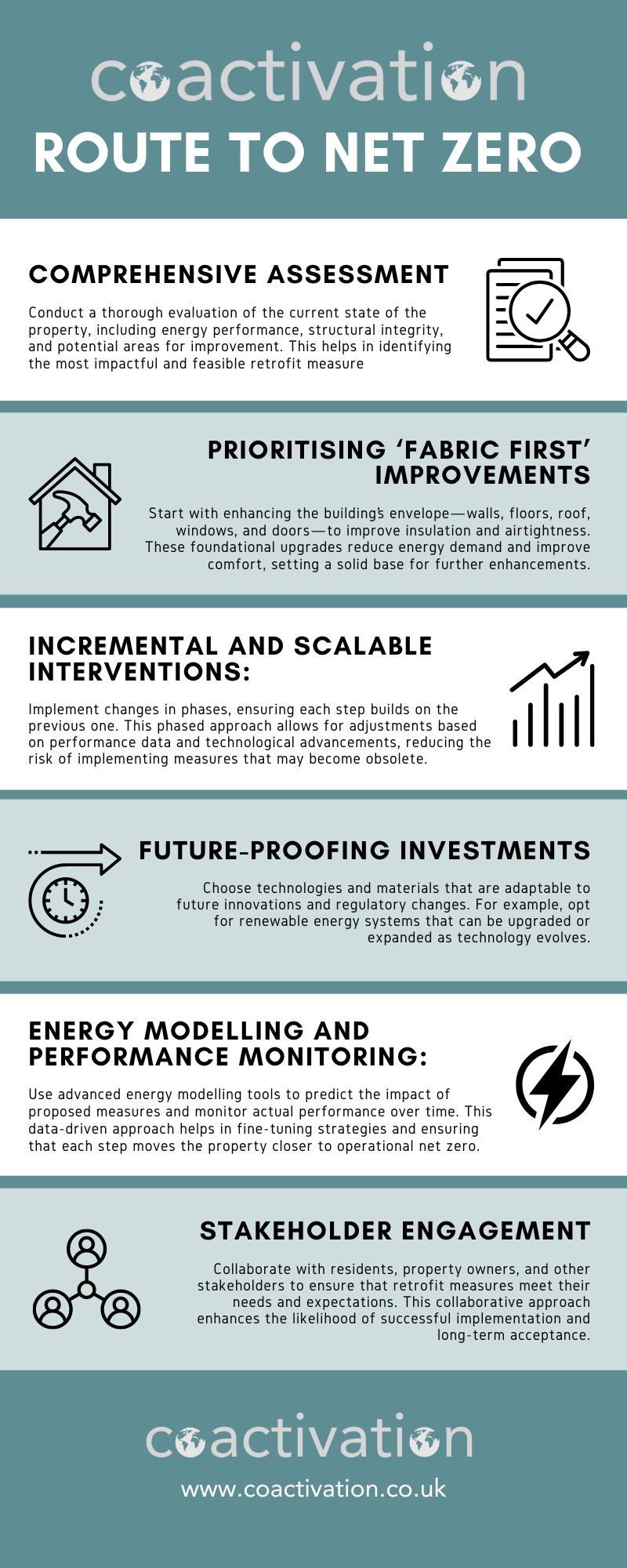Route to Net Zero
Map out your journey to achieving Operational Net Zero
Climate Emergency
The UK government has declared a climate emergency, pledging to achieve net zero greenhouse gas emissions by 2050. Human activities are drastically altering our climate, resulting in extreme weather events, species extinction, and melting ice caps. Public concern is high, with 80% of UK residents worried about climate change. This strong support underscores the importance of the net zero target, which aims to address these issues and reflect the widespread demand for climate action.
Achieving net zero by 2050 is essential for our planet’s health, economic stability, and the wellbeing of future generations. Prompt action on climate change not only reduces long-term costs but also mitigates the risk of severe and irreversible environmental impacts. Decarbonisation of key sectors such as energy, industry, and transportation is crucial, and the sooner we act, the more positive and far-reaching the outcomes will be.
For further details, explore the UK Government’s Net Zero Strategy and other relevant reports.
Operational Net Zero for Social Housing
Operational net zero refers to the balance between the amount of greenhouse gases produced by a building or organisation and the amount removed from the atmosphere, achieved through day-to-day activities. This means that the energy used for heating, cooling, lighting, and operating a property is sourced from renewable energy or is offset by equivalent carbon reduction measures.
Achieving operational net zero involves several strategies, including enhancing energy efficiency, integrating renewable energy sources, and adopting practices that minimise carbon emissions. The goal is to ensure that the building or organisation’s operations do not contribute to an increase in atmospheric greenhouse gas levels, thereby supporting broader climate change mitigation efforts.
Route to Net Zero
The journey to net zero can often seem overwhelming, with a wide range of energy efficiency measures available for upgrading homes. At Coactivation, we simplify this process by working with you to develop a clear, actionable plan for achieving net zero. Our goal is to ensure that the investments you make now are effective and future-proof, setting the stage for operational net zero housing stock.
We begin by identifying the incremental steps required to reach operational net zero, utilising the latest energy modelling software, RdSAP 12 9.4. Our team is also preparing to adopt RdSAP 10, which is expected to be released later this year, to stay at the forefront of industry standards.
By mapping out the route to net zero, we can recommend the most appropriate measures for Phase 1, ensuring that all actions taken are strategic and non-redundant. This approach guarantees that your investments lead to meaningful, long-term improvements in energy efficiency and sustainability.
'No Regrets' Approach to Net Zero
A 'no regrets' approach to net zero planning ensures that all measures implemented are strategic, cost-effective, and contribute positively towards achieving operational net zero without the risk of future redundancy or the need for costly revisions. This method focuses on making smart, well-planned decisions that provide immediate benefits and align with long-term sustainability goals.
By adopting a 'no regrets' approach, we can ensure that every retrofit decision is prudent, effective, and aligned with the overarching goal of operational net zero. This strategy not only optimizes current investments but also paves the way for a sustainable, energy-efficient future.

Interested in working with us for your Route to Net Zero?
We work with clients to deliver efficient, high quality and impactful retrofit of homes for social housing projects across the UK.
If you're keen to find out how we can support your PAS 2035 retrofit project, simply get in touch today, so we can explore how best to achieve the very best outcomes for you and your residents.

